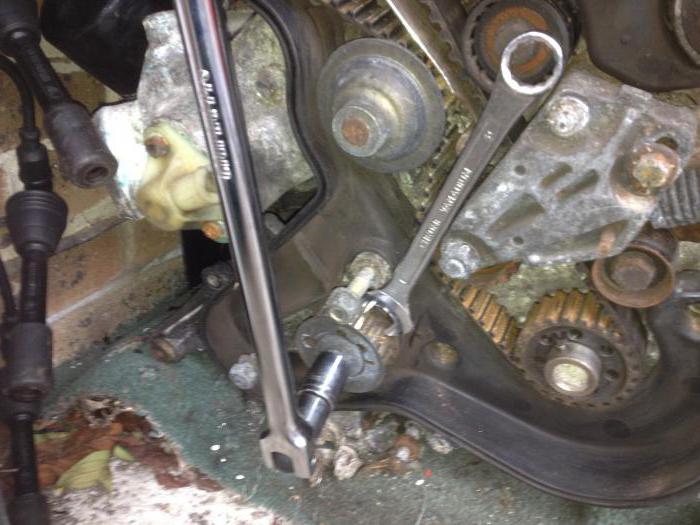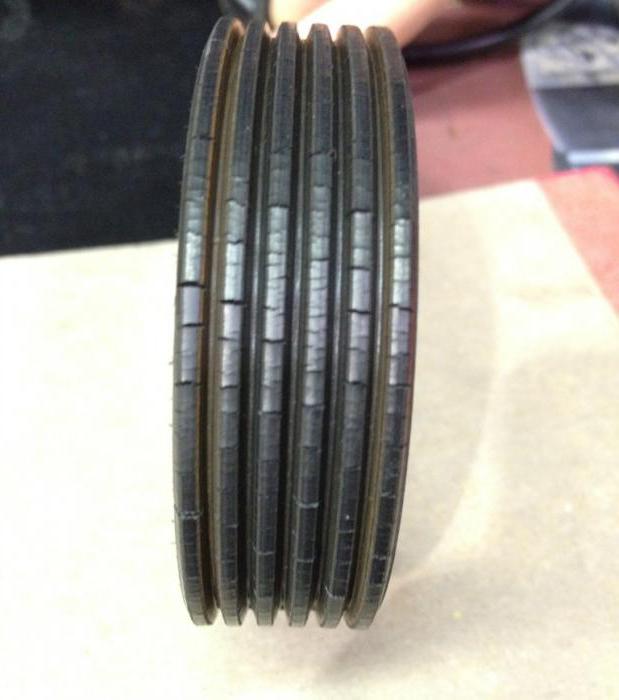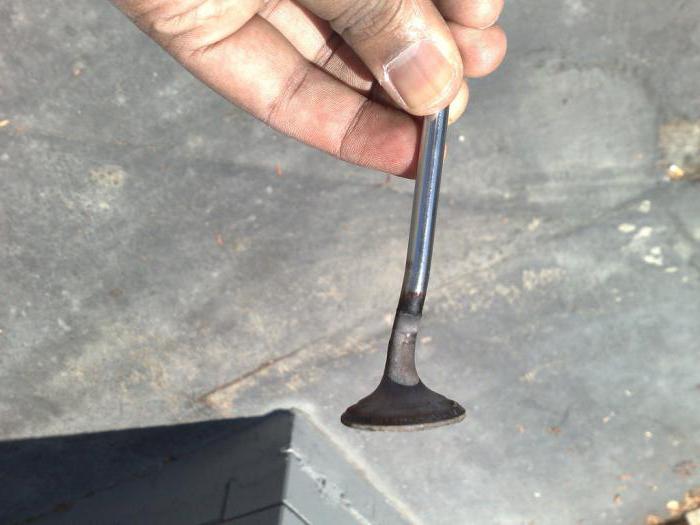Even 20 years ago, almost all the machines were equipped with a timing chain drive. The use of timing belts at that time was puzzling for many motorists. And no one could have thought that in a few years just such a design would be applied to all modern cars. Manufacturers attribute this to the fact that the belt, in contrast to the chain, is less noisy, has a simpler design and low weight. However, nothing lasts forever. What to do if the timing belt is torn? About this and not only - further in our article.
Differences from Chain Drive
During operation, the chain drive practically does not wear out. It serves as much as the engine itself. Yes, it is noisier, sometimes stretched, however, unlike a belt, it will never slip and will not break. The chain should not be tensioned . In the case of a belt, it must be periodically tightened. And the wrong stretch can provoke a skew on the teeth. Because of this, the motor will not work properly, and the resource of the element is significantly reduced.
Does the valve bend?
Among motorists there is an opinion that if the timing belt "Renault" is torn, the valves immediately bend. This is partly true. But not always. It all depends on the complexity of the engine design. If this is a “shesnar”, there will definitely be a bend of the valves.
Cars with 2 valves per cylinder (intake and exhaust, respectively) are considered more reliable in this regard. But again, there are exceptions (take, for example, the Soviet "eight", a 1.3-liter carburetor). In the case of the chain, things are much simpler. She starts to ring hard. And this noise can last long enough - one, two, three thousand kilometers. Until the car owner is tired of this sound and he comes to the conclusion that something is wrong here. The chain, unlike the belt, is very “tenacious” in this regard.
What does this lead to?
If you have a timing belt broken, the consequences may be different. As we said earlier, it all depends on the design of the power unit. Here you can be guided by the principle "the simpler the motor, the more reliable it is." When the valve does not reach the piston crown on the engine in TDC position, nothing will happen. In this case, if the timing belt is torn, only the purchase of a new product can be prescribed in the expense item. All valves will remain intact, without damaging the geometry of the stem.

But not always a belt break occurs with such an easy descent. If your car uses 2 intake and exhaust valves per cylinder (and this is most cars younger than the 2000s), there is a high probability that they will bend. The use of such a timing design is aimed at increasing power. However, if the timing belt is torn, the consequences will be very sad. In this case, the camshafts (of which there are two) stop in the position in which the breakdown occurred. The flywheel, spun by inertia, rotates the crankshaft, due to which the rod collides with the piston.
If the breakdown occurred at idle and at neutral, deformation of 2-3 elements will occur. If the timing belt (16 valves) tore on the go (and at high speed, which happens in 90 percent of cases), all elements are bent without exception. In order to replace them, the dismantling of the cylinder head is required.
But even if several elements are bent, experts recommend changing the valves as a whole assembly. The guides of the bushings are also deformed at speed. As a result, replacement or expensive repair of the cylinder block will be required. If the speed and speed are too high, this is enough to deform the piston in contact with the valve. Repairing it makes no sense - just a replacement.
What motors are the most unreliable at a break?
According to statistics, DOHC engines, as well as units from Japanese manufacturers (Nissan, Toyota, Subaru), are highly prone to deformation and damage. The simplest and, accordingly, reliable are eight-valve engines with one camshaft (SOHC). Are established on Nexia, Lanos and Lacetti.
Diesel
Whatever horror stories are told about eight- and sixteen-valve gasoline engines, the diesel engines have the most serious consequences.
Due to the more complex design, the valves in the TDC position have almost no stroke. Therefore, if the timing belt of a diesel engine is torn, a deformation of a number of nodes will occur. These are camshafts with a bearing, connecting rods (as shown in the photo above) and pushers. The cylinder block is also subject to replacement.
Causes
There are many factors that cause a cliff:
- Contact with rubber and oil and dirt. To prevent this from happening, this unit is carefully closed with a plastic case, which is bolted on both sides. When the element is broken or replaced, this casing is often deformed, due to which foreign objects can re-enter the surface of the mechanism.
- Natural wear of an element or factory defect.
- Wedge of a water pump, or in common people "pump." It is closely interconnected with the work of this mechanism.
- Wedge of a tension roller, camshaft or crankshaft. It is very difficult to cause a breakdown of the last two, which cannot be said about the pump or the roller.
Replacement
If the timing belt has broken (this is a VAZ or a foreign car - it does not matter), the first step is to install a new element. There are two reasons for the upcoming replacement:
- Natural wear. Manufacturers recommend replacing the element at least once every 80 thousand kilometers. However, there are frequent cases when the belt "nurses" 150-200 thousand each without deformations and whistles. But this does not mean that you can transfer the replacement indefinitely. This is fraught with expensive repairs.
- Mechanical damage. The structure of the belt may be damaged due to gross installation errors. This is a mismatch of marks, insufficient or excessive tension of the element. Also, the belt breaks (more often it just flies) with an active ride "to the cut-off", which is accompanied by sharp braking. If the machine is “chipped” with a cutoff offset, the belt is likely to break. Therefore, do not often operate the car in hard loads.

During long-term operation, it is important to pay attention to the degree of tension of the element, and if necessary, tighten it. The presence of various tears and cracks on its surface is unacceptable. By the way, an unstretched belt can fly off the marks. In this case, the takeoff between the point on the camshaft housing and its asterisk will be more than one centimeter.
Prevention
In order not to suddenly break the timing belt (8 valves), it is necessary to monitor its external condition and listen to the engine. At the slightest doubt, pay attention to the gas distribution mechanism.
Remember that replacing a belt is much easier and cheaper than repairing an engine. If it emits characteristic squeaks or sags when the engine is off, this is the first sign talking about its replacement. Some drivers believe that he is so "run-in." This is a lie - the belt should work properly from the first seconds of starting the engine. It is not necessary to pull it often - the cord tends to stretch, thereby losing strength. Because of this, the belt bursts or flies off the marks. If frequent exemptions, most likely, you have installed a defective part. To avoid wedges of shafts and pumps, do not overheat the motor and try not to use it in hard sport mode.
Cost of work
If the timing belt broke (2112 including) without bending the valves, the cost of replacing it will be about 500 rubles. But if you have certain skills, you can do it yourself. Thus, the breakdown budget will be no more than a thousand rubles.

At the same time, it is recommended to check the condition of the impeller of the pump and the tension roller - they should rotate smoothly, without sounds and play. In the event that a wedge occurs and valve replacement and cylinder block repair are required, the cost of work can reach 40-50 thousand rubles. If this is an old foreign car, it is easier to install a contract engine from disassembly - in some cases it is really cheaper than repairing the old one. Well, in order to prevent this situation, follow the stretch of the element and its external condition, and most importantly - observe the frequency of replacement of 60-80 thousand kilometers. Even if after this period the belt does not constitute a danger (without deformations and extraneous sounds), it will not be superfluous to play it safe by installing a new element in its place.
So, we figured out what to do if the timing belt broke.